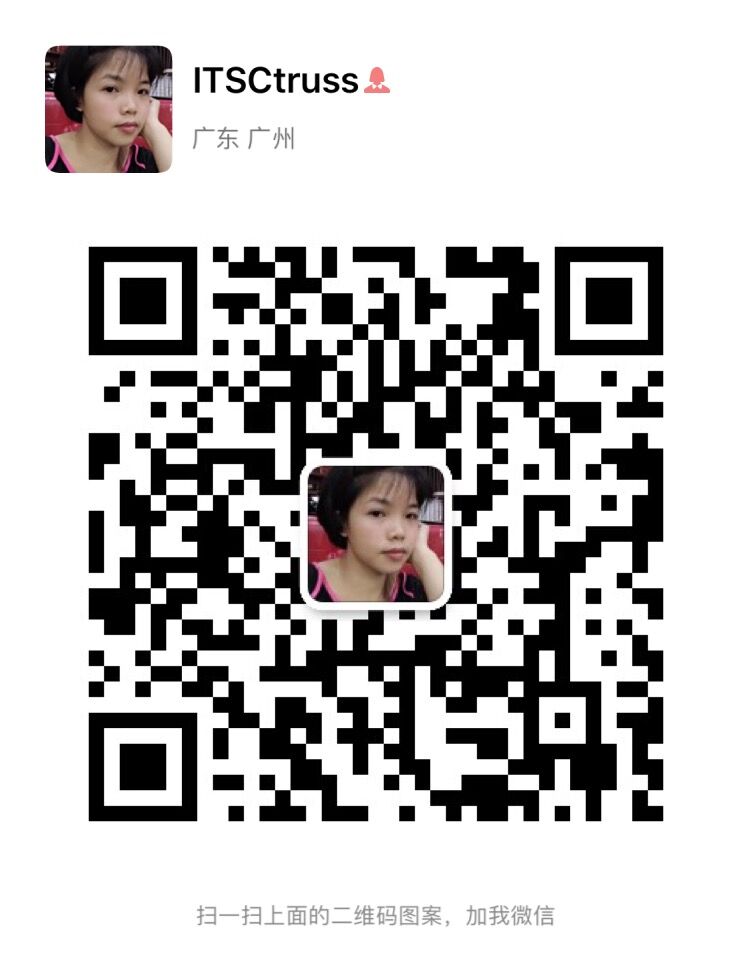What is Black Trussing?
Black trussingrefers to metal framework trusses to support lighting, sound equipment, rigging and other stage elements. and it is painted or coated black, usually foraestheticreasons, so they blend into the background during performances.
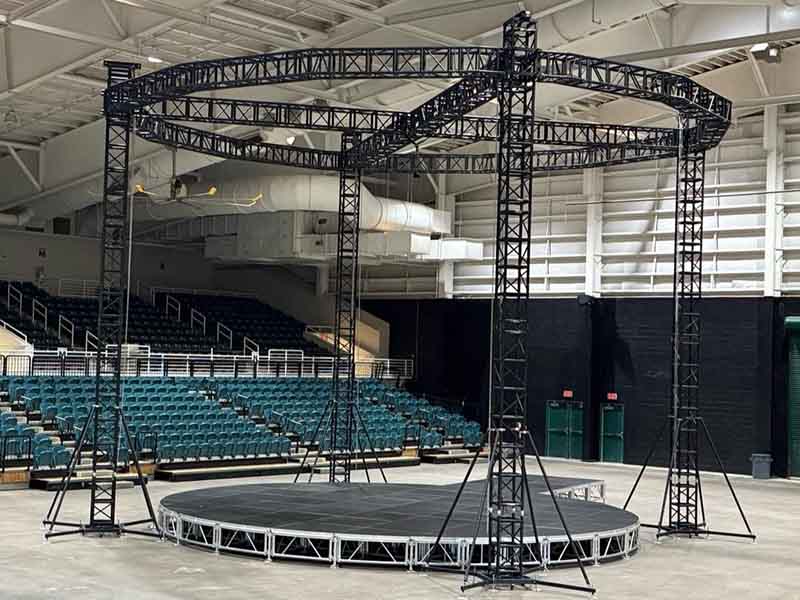
Black trussing loadingoutlay:
This Black Lighting Truss load capacity is crucial for events, and safety is a big concern, expecially in the USA where there are strick regulations.
This black lighting truss is for cicus, and there are the aerialist load outlay and lighting equiopment load outlay, which is carefully calculated by professional engineers.
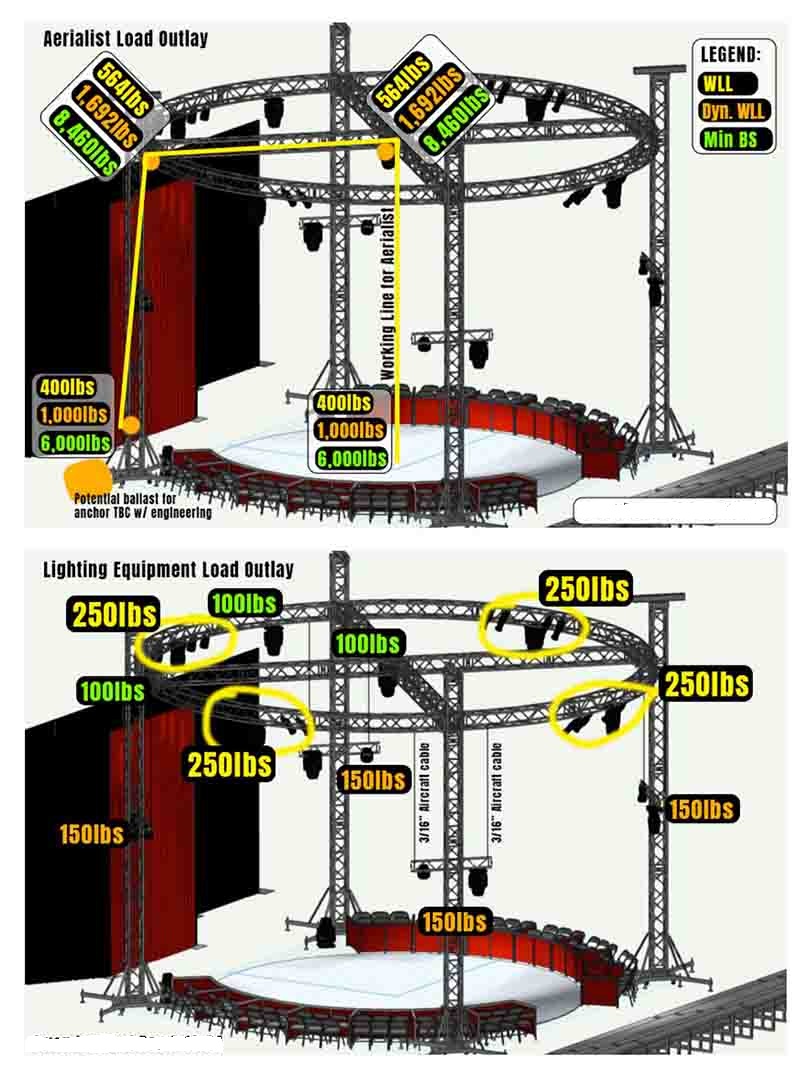
The whole Black Stage Truss is tested by ITSCtruss before delivery.
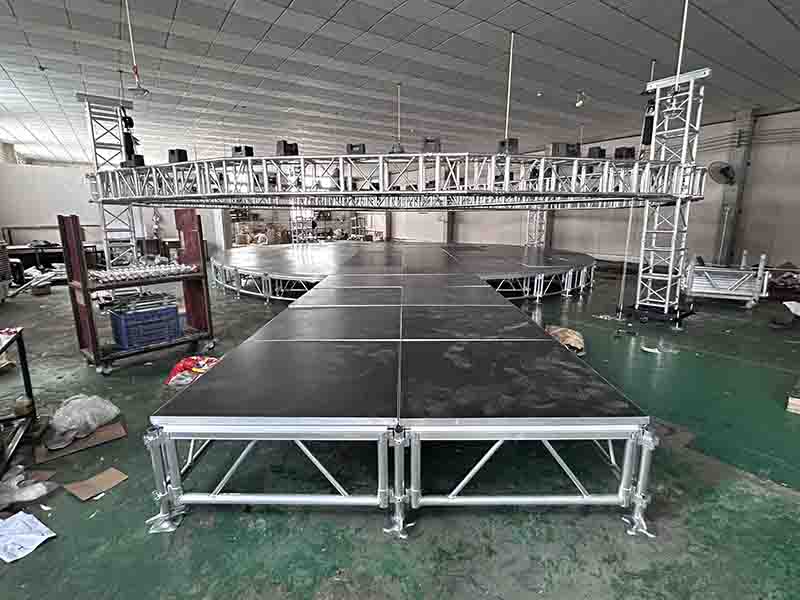
Black Trussing System Installation:
Now, the circus is in an arena, which is a large indoor venue. So the setup would need to be substantial enough to handle the scale of a circus, which might include aerial acts, acrobatics, lighting, and sound. And black trussing should be safe enough to load all the weights.
Then, the installation process. How do you secure the trusses in an arena? Arenas usually have rigging points in the ceiling, so maybe the trusses are hung from those. Alternatively, they might use ground-supported structures like towers or scaffolding. The choice between ground support and overhead rigging would depend on the arena's infrastructure and the circus's requirements.
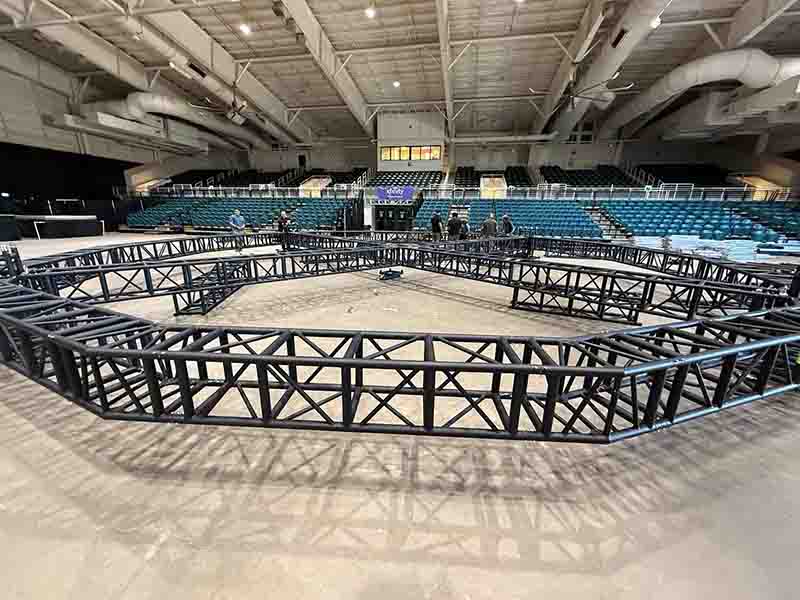
ITSCtruss is professional in black trussing system for circus events:
Black trussing would need to be either purchased or rented. Since circuses are often touring, they might rent the trussing locally in each city to save on transportation costs. But if they own their equipment, they have to transport it, which adds to the loading outlay. Transport logistics would involve trucks, loading docks at the arena, and possibly cranes or forklifts to move the trusses into place.
The loading outlay would also involve the schedule: when the trucks arrive, how much time is allocated for load-in and setup. Arenas have specific time slots for load-in, so the process needs to be efficient. There might be union labor involved, depending on the location in the USA. For example, in some cities, you have to hire local stagehands through unions, which affects the labor cost and workflow.
Safety checks are essential. After installing the trusses, they need to be inspected. Maybe a certified engineer has to sign off on the rigging. Also, considering the weight distribution, ensuring that the arena's floor can handle the load if using ground-supported trusses. Fire safety is another aspect; materials used in the trussing and any attached equipment might need to be flame-retardant.
Lighting and other equipment attached to the trusses would need proper cabling and power distribution. Cable management is part of the setup to prevent tripping hazards and ensure reliable connections. The black color helps the trusses disappear into the background, so lighting designers can focus the audience's attention on the performance areas.
Documentation is probably required. Having detailed plans and load calculations, maybe even submitting them to the arena management or local authorities for approval. Permits might be necessary, especially if the installation is complex or involves overhead rigging.
Breakdown (load-out) is the reverse process. After the circus ends, the trusses need to be disassembled, packed, and loaded back onto trucks. Time constraints again, as the arena might have another event scheduled soon. Proper storage and transportation to prevent damage to the trusses.
Potential challenges: arena's existing infrastructure limitations, weight restrictions, union labor disputes, time pressures, ensuring all components are compatible, weather if loading dock is exposed, coordinating with other vendors (like sound, lighting, props) to avoid conflicts during setup.
I should also think about specific examples. For instance, Cirque du Soleil uses elaborate rigging and trussing systems for their performances. They might have custom solutions, but the general principles would apply here too.
So putting this all together, the steps would involve planning the rigging design, ensuring compliance with safety regulations, coordinating logistics for transportation and labor, installing the trussing with proper rigging techniques, attaching necessary equipment, conducting safety inspections, and then efficiently breaking down and loading out after the event.
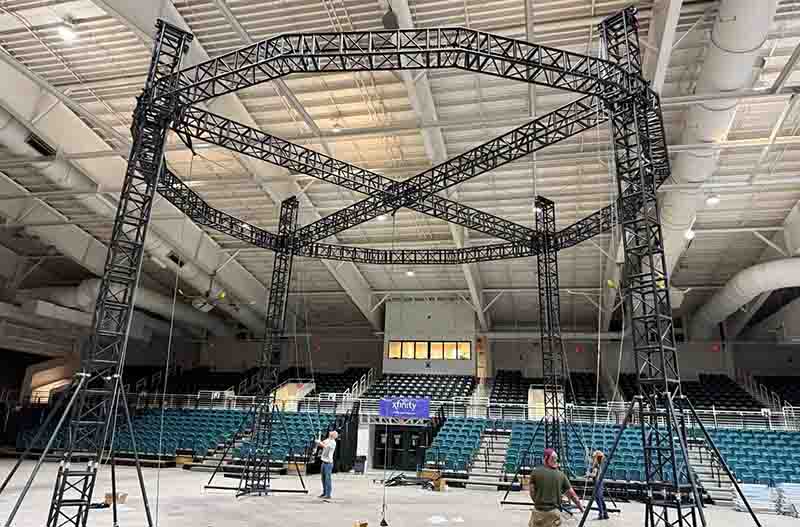
Black Trussing Structure Approaches for black trussing setup in circus in USA:
Setting up black trussing for a circus in a U.S. arena involves a meticulous blend of technical planning, safety compliance, and logistical coordination. Here's a structured approach:
1. Pre-Planning & Design:
2. Logistics & Load-In:
Transportation: Coordinate trucks for truss transport. Verify arena dock access and schedule load-in timeslots.
Labor: Hire union stagehands if required (e.g., in cities like NYC or LA). Use forklifts/cranes for heavy truss segments.
Assembly: Erect trusses using certified riggers. Ground supports may require floor protection (e.g., plywood) to prevent damage.
3. Installation & Sately:
Rigging: Secure overhead trusses to certified anchor points. Use spansets, shackles, and hoists. For ground supports, ensure base plates are level and weighted.
Equipment Attachment: Mount lighting, sound, and rigging gear (e.g., pulleys, carabiners) with safety cables. Manage cables with looms and ties.
Inspections: Conduct load tests and safety checks with a certified engineer. Verify fire retardancy of materials (NFPA 701).
4. Operational Considerations:
Power Distribution: Use UL-certified electrical gear. Plan circuits to avoid overloads.
Accessibility: Ensure catwalks or lifts for crew access during the show.
Documentation: Submit rigging plans/permits to arena management. Keep load charts and inspection reports on-site.
5. Load-Out & Departure:
Disassembly: Reverse installation steps. Label truss segments for efficient packing.
Transport: Secure trusses in trucks with padding/straps. Verify no damage during transit.
Debrief: Review lessons learned for future tours.
Key Challenges & Solutions:
Time Constraints: Prioritize critical path tasks (e.g., rigging before lighting).
Labor Coordination: Clarify union rules in advance to avoid delays.
Infrastructure Limits: Verify arena weight limits and rigging points pre-contract.
Example Reference:
Cirque du Soleil’s touring shows use modular trussing systems and redundant rigging for aerial acts, ensuring quick setup/teardown.
By integrating precise engineering, rigorous safety protocols, and streamlined logistics, black trussing can be effectively deployed to create a seamless, awe-inspiring circus production.
إذا أنت لديك أسئلة أو اقتراحات ، من فضلك اترك لنا رسالة ، وسوف نقوم بالرد عليك في أقرب وقت ممكن نستطيع!
سنتواصل معك بأقرب وقت ممكن !
 اتصل بنا
اتصل بنا
هاتف : +86 186 6570 2368
تليفون محمول: +86 186 6570 2368
 عنوان
عنوان
Gaopu Industrial Area, Jiaoxin, Shijing, Baiyun Dist.
مسح ضوئي إلى wechat :
